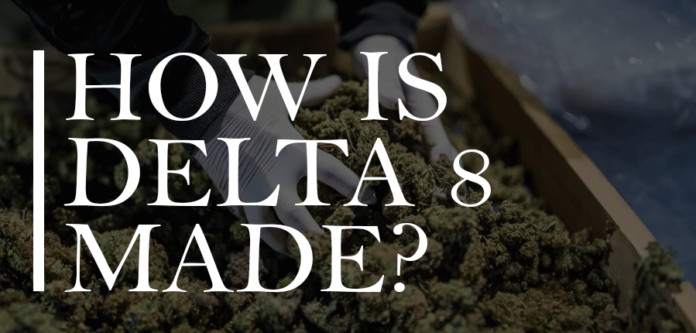Delta-8-Tetrahydrocannabinol (Delta-8) is a naturally occurring cannabinoid, although it is now predominantly synthesized in laboratory settings. This newfound cannabinoid has gained popularity and become the latest addition to the booming market of cannabidiol (CBD) products. Unlike its well-known counterpart, Delta-9-Tetrahydrocannabinol (Delta-9), Delta-8 currently operates in a legal gray area, benefiting from a lack of federal regulation.
The production of Delta-8 involves leveraging the abundance of other cannabinoids. By exploiting legal loopholes and leveraging technicalities, hemp-derived Delta-8 has emerged as a viable alternative. Moreover, it is relatively cost-effective to produce Delta-8 in a laboratory setting. This process involves manipulating the molecular structure of more common and less controversial cannabinoids, transforming them into Delta-8. This creative conversion method has contributed to the surge in availability and accessibility of Delta-8 products.
How To Get Delta 8 THC Safely
Ensuring the safety and purity of Delta-8 THC products is of utmost importance. It is crucial to conduct thorough testing to identify and eliminate impurities. One common issue with Delta-8 THC extracts is the presence of high levels of Delta-9 THC, which can be challenging to separate from the desired compound. This poses a concern as Delta-9 THC is subject to stricter regulations and may have psychoactive effects.
Furthermore, the chemical conversion process used to produce Delta-8 THC can lead to the formation of other impurities, particularly in products derived from CBD. These impurities may arise due to the specific conversion techniques employed or variations in the starting materials. Proper testing protocols are necessary to identify and quantify these impurities to ensure consumer safety and product quality.
In states where Delta-8 THC products are available through regulated cannabis dispensaries, they should adhere to the same testing and purity requirements as other cannabis products. These jurisdictions recognize the importance of rigorous quality control measures to protect consumers. However, the majority of Delta-8 THC products on the market are manufactured from hemp-derived CBD and are sold through unregulated grey market sources such as convenience stores, smoke shops, and gas stations.
Unfortunately, these products are often not subject to reliable testing protocols. The lack of regulation and oversight in these grey market channels means that consumers cannot guarantee the safety or purity of the Delta-8 THC products they purchase. Several instances have demonstrated that untested Delta-8 THC products from these sources have contained numerous impurities, potentially posing health risks to consumers.
To ensure the safety of Delta-8 THC products, it is crucial to establish comprehensive testing standards and regulatory frameworks. This would apply not only to products obtained from state-regulated cannabis dispensaries but also to those available through unregulated channels. Implementing robust testing and quality control measures would help protect consumers and provide them with reliable and trustworthy Delta-8 THC products.
What Is The Creation Process
All cannabinoids share a common origin as cannabigerolic acid (CBGA), which is often referred to as the “mother” of all cannabinoids. Throughout the growth cycle of the cannabis plant, CBGA undergoes various transformations, giving rise to the wide array of natural cannabinoids we know today, including well-known ones like THC and CBD. These transformations can be influenced by factors such as genetic variations, environmental conditions, and stress experienced by the plant.
The molecular structure of cannabinoids is remarkably similar, making it relatively straightforward to replicate these natural conversion processes in a laboratory setting. Even before the recent surge in popularity of Delta-8, scientists and lab technicians have been using similar techniques to convert common cannabinoids into rare and exotic ones. Now, this same technology is being employed to produce Delta-8.
Although Delta-8 can be found in certain cannabis cultivars, it is typically present in extremely low quantities. Extracting and purifying Delta-8 from raw plant material with less than one percent of the desired cannabinoid would not be cost-effective. This is why producers have turned to converting more abundant cannabinoids like cannabidiol (CBD) and Delta-9-tetrahydrocannabinol (THC) into Delta-8. However, the growing production of Delta-8 is driven by more than just its availability.
The thriving CBD industry has played a significant role in the rise of Delta-8 production. With an oversupply of CBD flooding the markets, producers have found themselves with surplus CBD as well as excess Delta-9 due to THC remediation processes. Both CBD and Delta-9 are ideal candidates for conversion into Delta-8. Moreover, Delta-8 has become more profitable than CBD in recent times. Additionally, Delta-8 operates within a legal loophole, evading the same legal restrictions that its sister cannabinoid, Delta-9, faces.












